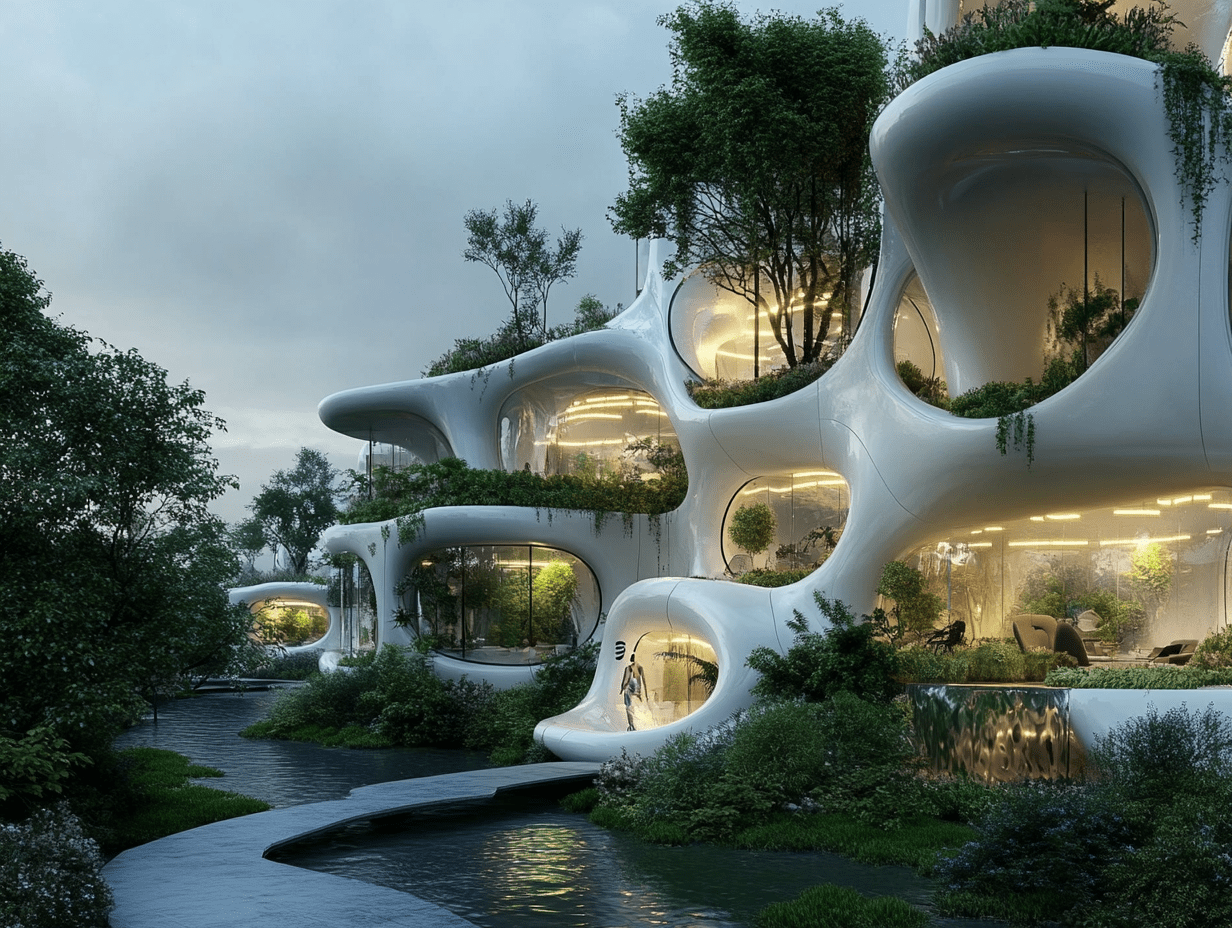- Home
- Articles
- Architectural Portfolio
- Architectral Presentation
- Inspirational Stories
- Architecture News
- Visualization
- BIM Industry
- Facade Design
- Parametric Design
- Career
- Landscape Architecture
- Construction
- Artificial Intelligence
- Sketching
- Design Softwares
- Diagrams
- Writing
- Architectural Tips
- Sustainability
- Courses
- Concept
- Technology
- History & Heritage
- Future of Architecture
- Guides & How-To
- Art & Culture
- Projects
- Interior Design
- Competitions
- Jobs
- Store
- Tools
- More
- Home
- Articles
- Architectural Portfolio
- Architectral Presentation
- Inspirational Stories
- Architecture News
- Visualization
- BIM Industry
- Facade Design
- Parametric Design
- Career
- Landscape Architecture
- Construction
- Artificial Intelligence
- Sketching
- Design Softwares
- Diagrams
- Writing
- Architectural Tips
- Sustainability
- Courses
- Concept
- Technology
- History & Heritage
- Future of Architecture
- Guides & How-To
- Art & Culture
- Projects
- Interior Design
- Competitions
- Jobs
- Store
- Tools
- More
Artificial Intelligence: Paving the Sustainable Future of Design
Discover how artificial intelligence is transforming the design industry with sustainable innovation. From optimizing materials and reducing waste to empowering eco-friendly solutions, explore AI-driven tools that merge creativity with environmental responsibility. Learn about challenges, ethical considerations, and the future of design shaped by AI's potential to build a greener, smarter world.

Artificial intelligence (AI) is transforming the way we approach design, pushing the boundaries of creativity while addressing the urgent need for sustainable solutions. As our world faces mounting environmental challenges, the design industry is under pressure to innovate responsibly. AI offers us the tools to not only rethink traditional methods but also to create smarter, greener, and more efficient designs.
From optimizing material usage to reducing waste, AI enables us to design with sustainability at the forefront. It empowers us to predict outcomes, streamline processes, and make data-driven decisions that benefit both the planet and our creative visions. The fusion of AI and sustainable design isn’t just a trend—it’s shaping the future of how we create and innovate.
Table of Contents
ToggleUnderstanding Artificial Intelligence In Design
Artificial intelligence is revolutionizing the design landscape by introducing advanced tools and techniques. It merges technology with creativity to create sustainable, efficient, and innovative design solutions.
Defining AI And Its Role In Design
AI refers to systems capable of performing tasks that require human intelligence, such as learning, reasoning, and problem-solving. Within design, its role extends to automating repetitive tasks, analyzing data, and providing insights. By integrating AI, designers harness its capabilities to minimize resource wastage, identify sustainable materials, and optimize processes for eco-friendly outcomes.
AI-powered tools assist in tasks like generative design, where algorithms generate multiple variations of a concept based on predefined parameters. These iterations allow us to choose the most sustainable and efficient designs. For example, AI can analyze environmental data and recommend eco-conscious materials for product development.

- Increased Efficiency: AI streamlines workflows, reducing time spent on repetitive tasks like prototyping or material selection. This allows more focus on innovation and creativity in design.
- Data-Driven Insights: AI processes large datasets to uncover patterns and predictions. This enables smarter decision-making, such as identifying the most energy-efficient designs or understanding user preferences.
- Resource Optimization: AI helps optimize material use, reducing waste throughout the design process. For example, AI tools can suggest ways to minimize offcuts in manufacturing.
- Personalization: AI tailors design solutions to meet individual or project-specific needs. In sustainable architecture, for instance, AI customizes designs to adapt to local climate conditions.
- Cost Reduction: By enhancing process efficiency and reducing errors, AI decreases costs over time. This makes sustainable design more accessible across industries.
Sustainability Through AI-driven Design
AI-driven design enhances sustainability by optimizing processes and prioritizing environmental considerations. It empowers designers to create innovative solutions that address ecological concerns efficiently.
Reducing Waste And Resource Optimization
AI improves resource efficiency by analyzing data to predict material needs and reduce excess. Generative design tools, for example, evaluate multiple iterations to minimize unnecessary use of raw materials. By optimizing production workflows, AI aligns resource utilization with sustainable goals, cutting down on waste while maintaining design quality. AI-based algorithms also streamline supply chains, ensuring resources are sourced responsibly and used effectively.
Creating Eco-friendly Solutions
AI contributes to eco-friendly design by integrating sustainability standards into creative processes. Tools equipped with AI assess the environmental impact of designs, suggesting alternatives like renewable materials or energy-efficient components. For instance, AI-driven simulation software evaluates thermal performance in architectural designs, enabling energy conservation in construction. Additionally, AI helps develop smart products, like energy-saving appliances, that reduce carbon footprints in daily use. By embedding ecological awareness into design workflows, AI supports the creation of greener, more sustainable products and structures.

Innovations Shaping The Future Of Design
AI is transforming the design industry by introducing advanced tools and sustainable practices. These innovations redefine how we approach creativity and environmental responsibility.
AI-powered Tools And Platforms
AI-driven tools simplify complex design workflows. Generative design software, like Autodesk’s Fusion 360, allows designers to input specific parameters such as material efficiency and environmental impact. The software then generates multiple design options optimized for sustainability and functionality. Machine learning algorithms further enhance design accuracy by analyzing vast datasets, identifying patterns, and predicting performance outcomes.
Platforms like Canva and Adobe Sensei integrate AI to automate repetitive tasks such as resizing, formatting, and layout adjustments. This automation increases efficiency, freeing up time for designers to focus on strategic, creative decisions. AI also enables real-time collaboration, using predictive insights to help teams adapt designs quickly based on shifting project requirements or sustainability standards.
Advances In Sustainable Materials
AI advances material innovation by identifying eco-friendly alternatives to traditional resources. Algorithms analyze properties of various substances, pinpointing options like biodegradable polymers, recycled composites, or materials produced using renewable energy. For example, IBM’s AI system aids material discovery by simulating molecular compositions to reduce resource extraction impacts.
With AI, we can also assess the lifecycle of materials, ensuring durability while minimizing environmental impact. Tools like SPINNOVA leverage AI to create textiles from waste byproducts, significantly reducing reliance on fossil-based materials. Generative design tools extend this approach by incorporating these sustainable materials into projects, ensuring environmental compatibility from concept to production. By integrating data-driven insights, AI directly supports the innovation of cleaner, longer-lasting resources for global use.

Challenges And Ethical Considerations
Artificial intelligence offers immense potential for sustainable design but presents notable challenges. Ethical considerations surrounding creativity, data, and fairness demand careful attention to ensure responsible application.
Balancing Creativity And Automation
AI transforms creative workflows by automating repetitive tasks and generating efficient solutions. However, over-reliance on AI risks diminishing human ingenuity. For example, generative design tools might prioritize algorithmic efficiency, potentially overshadowing unique, user-centric elements. Maintaining the balance requires integrating human oversight into AI-driven processes to ensure that originality remains central to design.
We must navigate the tension between creative freedom and efficiency. While AI accelerates design iterations, it can push designers to favor system-optimized solutions, limiting exploratory processes. Encouraging a collaborative approach, where AI augments human creativity rather than replacing it, addresses this concern.
Addressing Bias And Data Privacy
AI relies heavily on data inputs, bringing bias and data privacy issues to the forefront. Algorithms trained on biased datasets can unintentionally perpetuate inequalities in design decisions. For instance, bias in urban planning tools could lead to inequitable access to sustainable infrastructure. Actively auditing AI systems and diversifying datasets minimizes such risks and fosters inclusive design solutions.
Data privacy presents another critical challenge. Sustainable design applications often demand detailed user or environmental data, exposing sensitive information. Mismanagement can lead to ethical breaches. Adopting secure data-handling practices and transparent usage policies ensures user trust while leveraging AI for sustainable innovations.

Practical Applications Of AI In A Sustainable Design Future
AI serves as a powerful enabler of innovation across design disciplines, emphasizing sustainability while optimizing efficiency. Its integration supports the development of eco-conscious solutions in various industries.
Architecture And Urban Planning
AI enhances architecture and urban planning by enabling predictive modeling and eco-friendly design strategies. Architects use AI to analyze environmental data, such as sunlight, wind, and temperature, for optimizing building placement and reducing energy consumption. Tools like Spacemaker AI evaluate urban layouts for efficient land use, ensuring sustainable city developments.
Generative design tools explore multiple design iterations to create energy-efficient structures that harmonize with their surroundings. AI-based simulations test materials and predict performance, helping architects choose sustainable options like low-carbon concrete or recycled steel. In urban planning, AI-driven datasets inform infrastructure projects, ensuring responsible land usage and effective waste management.
Product Design And Manufacturing
AI optimizes product design and manufacturing by prioritizing efficiency and sustainability throughout the production lifecycle. Machine learning algorithms analyze material properties, suggesting alternatives like biodegradable plastics or renewable composites to minimize environmental impact. Generative design software integrates these materials, producing durable and eco-friendly products.
Manufacturers use AI-driven systems to reduce waste by predicting material requirements and enhancing precision in production. Platforms like Siemens Digital Industries optimize supply chains, promoting responsibly sourced materials and minimizing carbon footprints. AI-powered quality control tools also detect inefficiencies, ensuring fewer defective products and conserving resources. This collaborative approach between AI and humans supports a sustainable and scalable manufacturing process.
Conclusion
Artificial intelligence revolutionizes sustainable design by merging technological innovation with environmental responsibility. It optimizes material usage, automates workflows, and streamlines supply chains, reducing waste while boosting efficiency. AI-driven tools like generative design platforms evaluate multiple design iterations, ensuring minimal resource use and sustainable outcomes.
Eco-friendly innovations take center stage as AI enables material advancements. Algorithms identify renewable alternatives like biodegradable polymers and recycled substances, integrating them into design processes. Tools such as SPINNOVA exemplify this by utilizing waste byproducts to create sustainable textiles, promoting a circular economy.
Despite AI’s potential, challenges like balancing automation with creativity and addressing ethical concerns remain. Biased datasets and data privacy issues underscore the need for transparent, secure practices. Diversifying datasets and implementing human oversight aid in fostering inclusive, ethical design methodologies.
Across architecture, urban planning, product design, and manufacturing, AI empowers industries to adopt eco-conscious frameworks. Predictive modeling tools enhance building placement for energy efficiency, while platforms such as Siemens Digital Industries streamline supply chain operations, prioritizing sustainable material sourcing.
By prioritizing innovation and sustainability, AI continues to shape a future where design aligns seamlessly with global environmental goals.
- AI Design Innovation
- AI for Green Architecture
- AI in Eco-conscious Design
- AI in Environmental Design
- AI in Environmentally Friendly Design
- AI Innovation in Design
- AI-based Design Strategies
- AI-driven Eco Design
- AI-driven Sustainable Design
- Artificial Intelligence in Design
- Designing with Artificial Intelligence
- Eco-friendly Design Technology
- Future of Design with AI
- Green Design with Artificial Intelligence
- Intelligent Design and Sustainability
- Machine Learning in Design
- Smart Sustainable Design
- Software for Sustainable Design
- sustainable AI architecture
- Sustainable Design Solutions
- Sustainable Design Technology
Submit your architectural projects
Follow these steps for submission your project. Submission FormLatest Posts
Veo 3 for Architecture: Free Prompts & How to Master Visual Design Videos
Veo 3 introduces AI-powered video generation for architecture, allowing designers to present...
Midjourney Video Update: A New Era for AI Architecture & Landscape Design
Midjourney’s new video feature introduces AI-powered animation for architectural and landscape renders,...
Google Nano Banana and Architecture: What This New Image Generator Means for Designers
Nano Banana is a new benchmark for testing how well AI models...
The Ethics of AI in Architecture
Ethics of AI in architecture, clarified: bias audits, human-in-the-loop guardrails, IP and...












Leave a comment